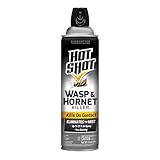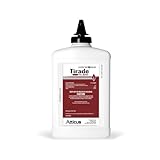Hornets are part of the wasp family, but they’re usually not aggressive if you don’t disturb them or keep away from their nest. Unfortunately, some hornet species tend to build their nest near or inside your own home. So how do you remove the nest without incurring their wrath?
How to get rid of hornets nest? Wait until evening when the hornets are inactive, then spray the nest with insecticide. This will kill the hornets inside, allowing you to remove the nest safely. If some remain, repeat the procedure one more. Finally, destroy the nest, place it in a plastic bag, and properly dispose of it.
Throughout this article, you’ll discover more about identifying, locating, and removing hornet nests as well as preventing them from ever coming back. Read further for more!
Hornet Nest Identification
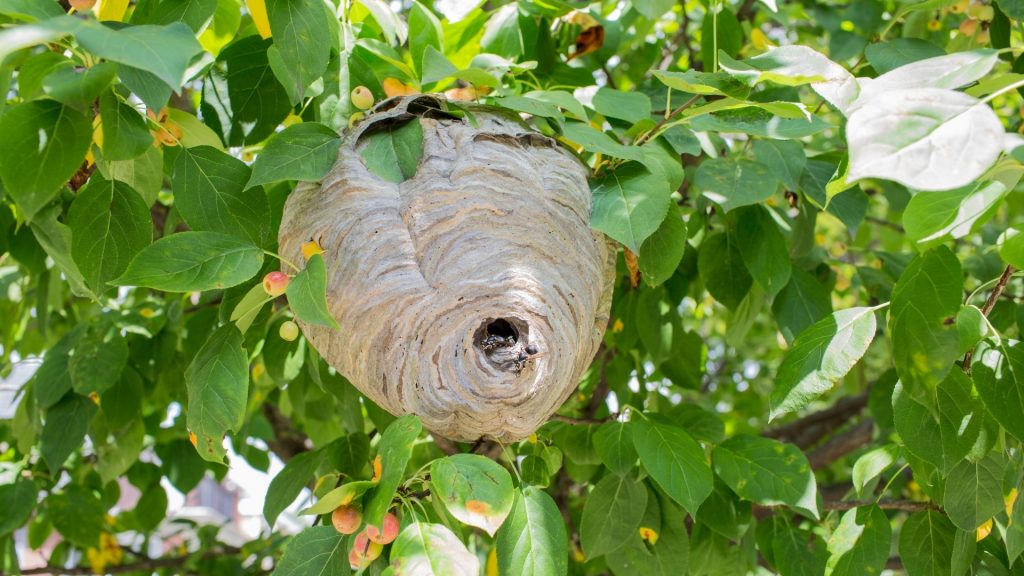
Hornets’ nests aren’t hard to identify. This is because you’ll mostly find them hanging from exterior locations such as shrubs, trees, high up in the eaves, overhangs, or even below decks. The nests are typically aerial and you might also notice hornets entering and departing from the nests.
What Does a Hornets Nest Look Like?
A hornets’ nest is teardrop-shaped, light brown, and roughly the size of a basketball. The paper-like structure features hexagonal combs, an outer casing, and an entrance. Inside the nest are nesting chambers too for the queens to lay their eggs.
What Is a Hornets Nest Made Of?
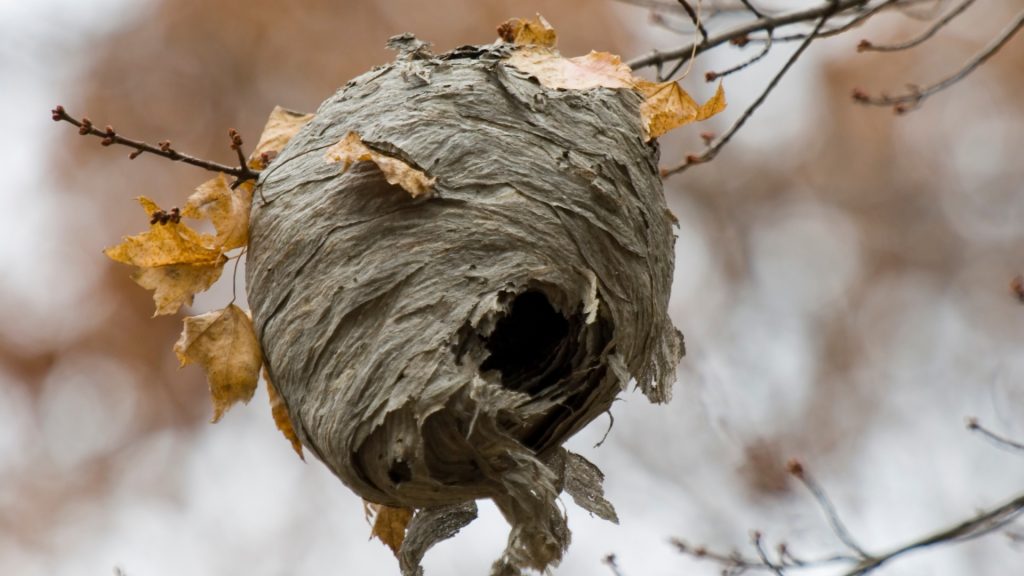
A hornets’ nest is made of a mixture of saliva or wasp spit and wood fibers chewed together into a paper-like pulp. In addition, the nests feature 3 to 4 tiers of open-celled combs, which lie packed within a thick layered outer shell that bears a single opening at the bottom.
How Many Hornets Are in a Nest?
There may be up to 5,000 hornets in a nest, but when it gets cooler during winter, the insects abandon the nest, leaving the queen behind. The queen locates a safe retreat such as underneath tree bark, rotten wood, or inside a home and re-emerges during springtime to build a new hive.
How To Tell if a Hornet’s Nest Is Empty?
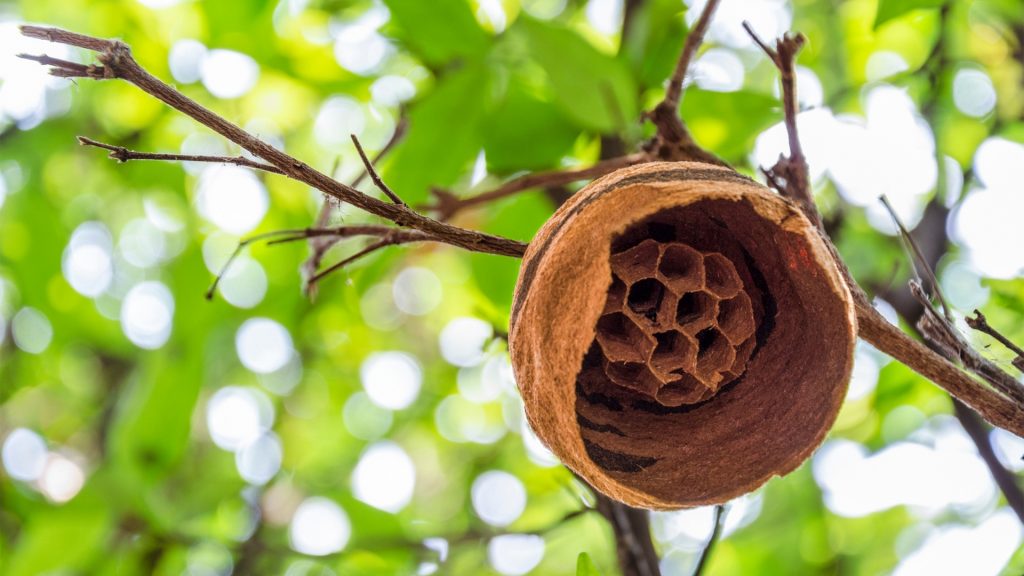
Hornets’ nests only last a single summer, and any insects left inside during winter either freeze or die of old age. Still, you can tell a hornets’ nest is active if you find many hornets flying to and from around the entrance.
Types of Hornet Nests
There are two main types of hornet nests, European hornet nests, and Bald-faced hornet nests. Both exhibit different nesting habits, as shown below:
- Bald-faced hornet nests. Bald-faced hornet hives are egg-shaped, grayish-blue, and almost 2 feet long. The bald-shaped hornets prefer to hang their nests in trees, large bushes, or shrubs about 3 feet above the ground, overhangs, building roofs, and eaves.
- European hornet nests. European hornets look for places sheltered from both sun and rain. They thus hide their nests in dark, hollow spaces, and only a small part of the nest remains visible. The insects nest in tree cavities, wall voids, underneath house siding, crawl spaces, sheds, or attics with the nest entrance usually more than 6 feet above ground.
Hornets and Their Nests
In the next section, we shall look at various topics related to hornets and their nests. These include the preferred nesting locations, how hornets build their nests, and at what point they depart from the nests.
Where Do Hornets Nest?
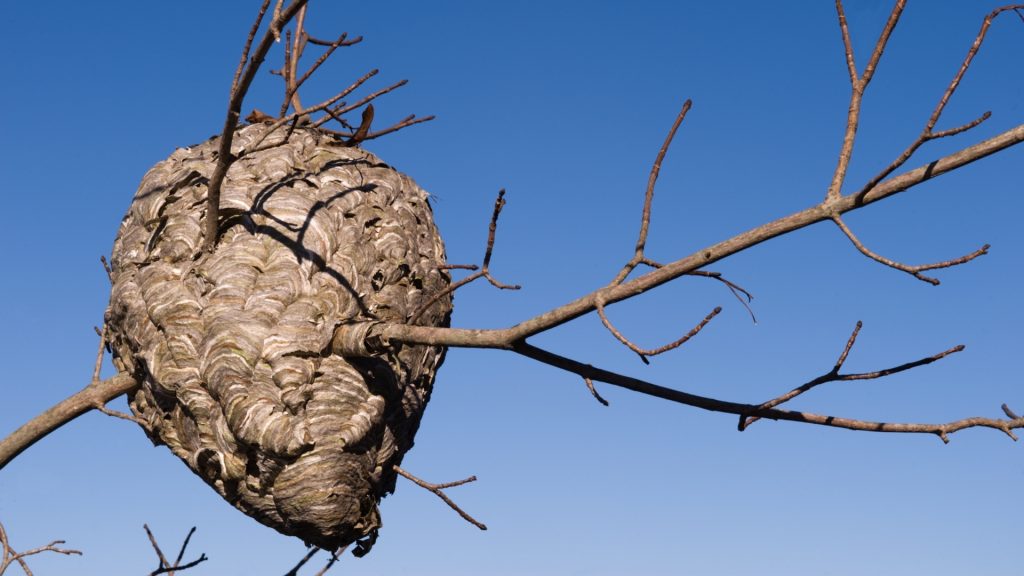
Hornets nest in different places depending on the species. Generally, the insects build the nests in sites offering lots of shade and safety from the elements. They prefer to make them in high locations or areas raised above the ground but easy to access.
Such places include:
- Attics
- Sheds
- Tree branches
- Large shrubs
- Rooftops
- Decking
- Hollow tree trunks
Hornets can also nest in the ground within enclosed spaces that offer security. This includes abandoned rodent burrows, voids, and cavities in gardens, fields, and parks.
During winter, hornets nest next to tiny crevices in home siding, behind tree bark, or rotten logs. In spring, they build their nests within tree branches and below the eaves.
Related: Hornet Nest vs. Wasp Nest | Similarities, Differences, and How to Get Rid of Them
How Do Hornets Make Their Nest?
Hornets make their nest by chewing wood fiber to a papery pulp and then mixing it with their starchy saliva. This results in a pulpy substance which they spread with their legs and mandibles to form the nests. They construct their nests in areas with lots of shade and ample protection from harsh weather.
How Fast Do Hornets Build a Nest?
Hornets can take up to 3 weeks to finish creating the nest. They first have to source for the necessary construction materials like wood fiber, and then proceed to chew it until it turns into a pulp. After that, they proceed to make the nest.
When Do Hornets Leave Their Nest?
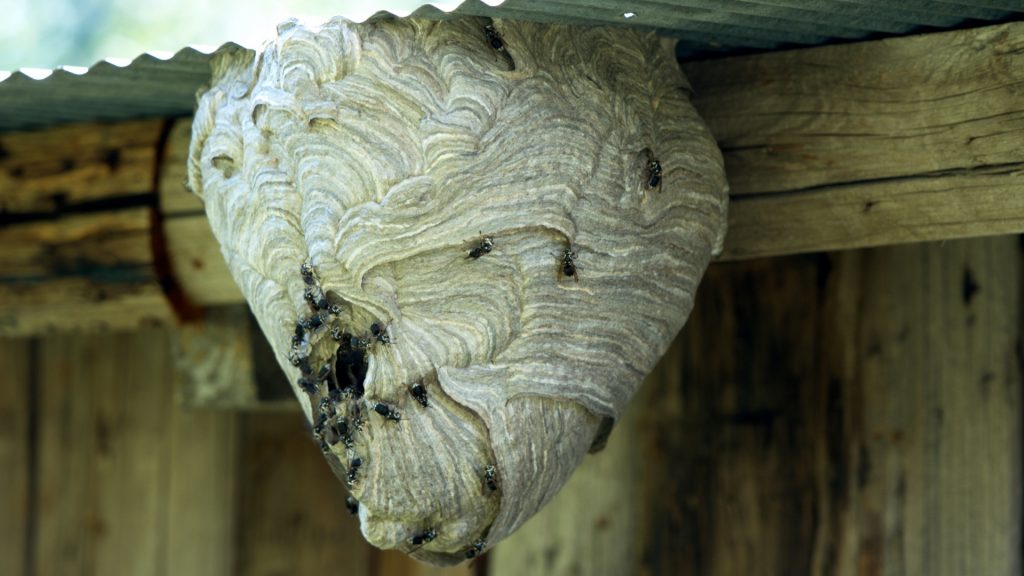
Hornets leave their nest when they look for food. Mature female workers are the ones responsible for nest building and usually fly out looking for construction materials and food.
How Far Do Hornets Travel Away From Their Nest?
Hornets travel quite some distance from their nests as they need to forage for food and nesting material. They can travel between 275 meters to nearly 1 kilometer from their nest when foraging for food.
Are Hornets Nests Active in Winter?
Hornets’ nests are generally not active during winter as the workers die off while the queen hibernates under logs, behind siding, or in the soil. As a result, the nest becomes abandoned and remains empty and inactive during the cold winter.
Do Hornets Use the Same Nest Every Year?
Hornets don’t usually re-use old nests from previous years but build a new one instead. So, if you notice a large nest at the start of summer, it’s most likely to be an inactive nest permanently abandoned during the previous winter.
How To Find a Hornets Nest?
To find a hornets’ nest, cautiously follow active hornets back to their nesting place. They build their nests in largely undisturbed areas; hence you’ll find them in rooftops, tree branches, crevices, and beneath the ground under rocks and fallen logs.
How To Remove Hornet Nest?

To remove hornets’ nest once you’ve located it, you can do the following steps below:
- Wear protective clothing to prevent the hornets from stinging you. These include long sleeves and pants, gloves, and closed shoes.
- Treat the nest by drenching or dusting before removing it. Do this at night or late evening as the hornets are less active then.
- For an active nest, control the hornets first using a concentrated liquid insecticide plus a pyrethrin-based aerosol to spray the area around and inside the nest. The spraying will kill all the adult wasps, while the residual will eliminate any hatching wasps.
- Once the product is dry, you can remove the nest safely.
- If some immature hornets remain in the nest, repeat the treatment every 2 weeks until all of them die, then remove the nest.
- If the nest is inactive, dust the entire nest with an insecticide starting with the entrance hole. This method takes a longer time to eliminate the hornets and can take up to a few weeks, depending on the nest size.
- Destroy the nest and dispose of it in a polythene bag or soak it in a bucket of soapy water.
When Can You Remove a Hornet’s Nest?
You can remove a hornets’ nest as soon as you can. Moreover, it’s advisable to treat a hornets’ nest early enough since they tend to grow quite large. Larger nests can contain thousands of wasps that become more aggressive with time to protect their nests.
Get Rid of Hornets Nest in Some Specific Places?
Here are guidelines on how to get rid of hornets in specific places:
How To Get Rid of Hornets Nest in Ground?
To get rid of hornets’ nests that appear in the ground’s surface—such as on flower beds—you may want to treat all the areas where you notice hornets frequently with insecticide. While doing so won’t eliminate the hornets entirely, it’ll reduce them to manageable levels.
How To Remove a Hornets Nest From a Tree?
Treat the nest at night using an insecticide spray. Avoid shaking or disturbing the nest while spraying, hold the can upright, and drench the nest. Make sure to stand at a safe distance from the nest itself. This method kills the hornets instantly and prevents renesting for a month.
- KILLS ON CONTACT: Hot Shot Wasp & Hornet Killer controls wasps,...
- UP TO 27 FOOT JET SPRAY: With a jet spray that reaches up to 27...
- NON-STAINING: This product is non-staining to most home siding...
- FOR OUTDOOR USE: Apply at sunset when insects are least active.
- AEROSOL SPRAY: Water-based formula eliminates the nest.
How To Get Rid of Hornets Nest on House?
To get rid of hornets’ nests, apply an appropriate insecticide directly on the nest. This will knock down the nest and also kill any hornets within. To discourage re-nesting, you can also apply insecticide around the home.
Related: How to Get Rid of Wasps in the House? | Information and Facts
How To Remove a Hornet Nest From House?
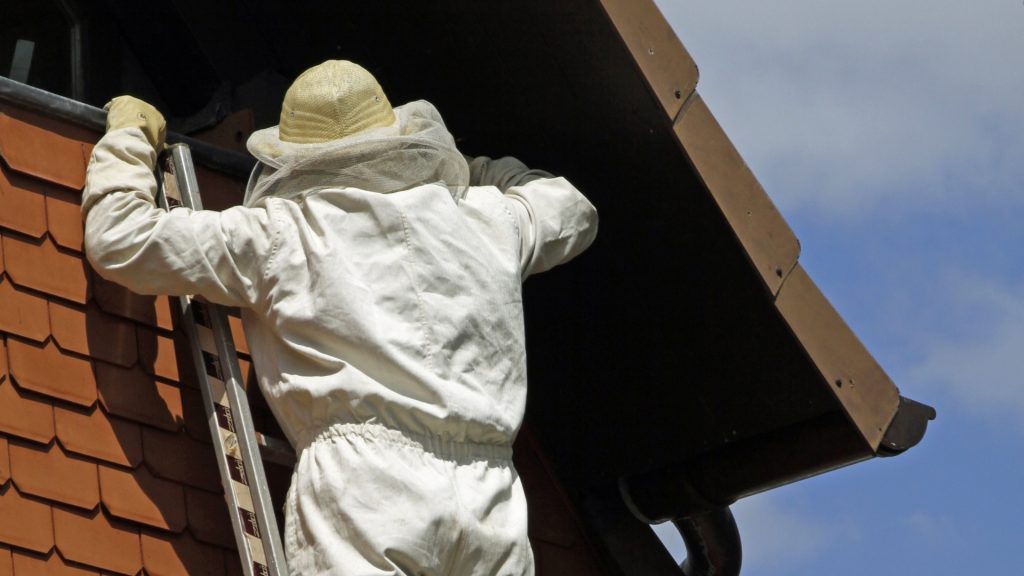
Use a concentrated liquid insecticide treatment to kill the hornets. Apply the mix to any areas you notice hornets congregating, including door and window frames, eaves, overhangs, and around light fixtures. The treatment kills the insects and provides a residual that kills them once they come into contact with any of the treated areas.
How To Get Rid of Hornets Nest in Gutter?
To get rid of a hornets’ nest in your gutter, try using a pesticide to spray on the site. Repeat the process over the next few days. Once you ensure that all the insects are gone completely, you can then proceed to remove the nest with a long-handled broom.
How To Get Rid of Hornets Nest in Wall Cavity?
To get rid of hornets’ nests inside a wall cavity, use an insecticide dust. This dust will kill all the hornets nested within the wall cavity. Consider blowing the dust several times into the hole for best results.
- Delta Dust Bed Bug Insecticide - 1 lb.
- Yield: 1 lb. of Delta Dust covers about 2,000 sq.ft.
- Target Pest: Ants, Bed Bugs, Boxelder Bugs, Cockroaches,...
- Active Ingredient: Deltamethrin, 0.05%
- Cannot ship to NY or CT.
- POWERFUL BROAD-SPECTRUM CONTROL: Tirade 1% Dust contains...
- READY TO USE + EASY TO APPLY: Control insects without the hassle...
- KILL 50+ HOUSEHOLD INSECTS: Wipe out common household insects...
- ONE PRODUCT FOR INDOOR + OUTDOOR USE: Tirade 1% Dust may be used...
- NO STAINS, NO STRONG SCENTS: Tirade 1% Dust is low-odor and...
- Protect your flowers and lawn from listed damaging pests
- Won't harm plants or blooms
- Kills by contact - over 150 listed insects
- Kills ants, Japanese beetles, whiteflies, aphids and many more...
- Ready to use - simply shake to apply
How To Get Rid of Hornets Nest Under Porch?
Use a backpack hose to spray warm soapy water directly on the nest. Doing so will kill the wasps. To prevent them from returning, you might want to spray the area around your porch with essential oils as well.
How To Get Rid of Hornets Nest in Window?
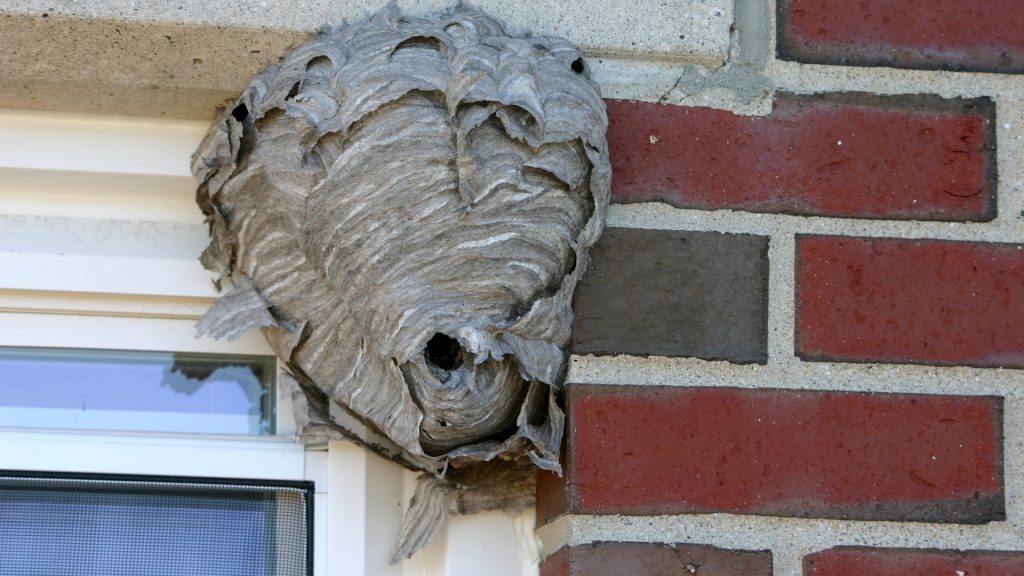
Spray the nest with an effective hornet insecticide and ensure it’s thoroughly soaked. It’s best to do so at dawn or early in the evening when the hornets are less active or sleeping. Leave the nest for a couple of days before removing it to ensure all the occupants are dead.
Best Products for Hornet Nest Removal
Here are the best products for hornet nest removal from Amazon:
Hornet Nest Sprays
1. PT Wasp-Freeze II Insecticide
- PT Wasp-Freeze II Wasp & Hornet Insecticide provides instant...
- The powerful spray can reach up to 15 feet, ensuring safety for...
- Residual activity ensures complete elimination of wasps and...
- Quick knockdown prevents the release of stinging pheromones,...
- Read, understand, and follow the label safety, application,...
PT Wasp-Freeze II Insecticide targets hornets among other insect pests and delivers instant death. And since the knockdown happens pretty fast, the hornets don’t get a chance to release their stinging pheromone. Still, to ensure your safety from hornet stings, the spray jet travels a distance of up to 15 ft (4.57 m).
2. Cyzmic CS Controlled Release Insecticide
No products found.
This insecticide features the innovative CapVantage technology and is useful in controlling a wide range of insects, including hornets. The technology allows for the immediate release of capsules that deliver a rapid knockdown. Also, some of the capsules diffuse active ingredients over weeks, making the formulation long-lasting.
Hornet Nest Deterrents
1. Waspinator
Waspinator is a hornet nest deterrent that’s effective and pretty easy to use. It’s also chemical-free, thus eco-friendly, and safe to use around kids and pets. The product scares away hornets from your backyard or picnic area but doesn’t kill them, leaving you to enjoy your outdoors in peace.
2. AIRCROW Wasp Deterrent
- [EFFECTIVE] Hornets are the “King of Wasps” and prey on other...
- [REALISTIC] Ours looks so realistic; the wasps won’t know the...
- [DURABLE] Constructed of highly durable foam that is weather...
- [NATURE’S REPELLENT] Unlike sprays that work temporarily, our...
- [DECORATIVE] It makes a unique, long-lasting ornament for your...
AIRCROW Wasp Deterrent is a realistic-looking fake hornet’s nest that’s quite durable. It’s effective in keeping hornets away from your garden, garage, patio, and deck plus it can also serve as an ornament since it’s waterproof and made of durable foam.
3. Upper Bound Deterrent Stickers
No products found.
These weatherproof honeycomb stickers are effective in preventing hornet nests. And since hornets are territorial insects, they’ll tend to keep from those areas where you place the Deterrent Stickers. For best results, place them underneath fence post caps and at the bottom of deck railings.
How To Remove Hornets Nest Naturally?
First, spray it with soapy water to kill the wasps, then remove the nest. You can do the same if the nest is underground. Ensure to carry out this activity when the hornets are least active.
This method works by clogging up the hornets’ breathing pores, leading to instant death. However, it’s highly risky as some hornets can escape and sting you.
You can also use a mixture of essential oils like lemongrass, clove, and geranium to repel hornets naturally.
- 100% PURE & NATURAL LEMONGRASS OIL - Handcraft Blends oils are...
- PREMIUM GRADE & QUALITY – All Handcraft Blends Essential Oils...
- HIGH QUALITY GLASS BOTTLE AND DROPPER – Our essential oil comes...
- VERSATILE FOR DIY PROJECTS – Perfect for aromatherapy, massage,...
- BOTTLED IN THE USA – Our oils are sourced from the best regions...
- Pure & Natural Clove Essential Oil: Artizen Essential Oils stand...
- Avoid Cheap Diluted Clove Oil: Unlike competitors that dilute...
- High Natural Oil Concentration: Many 4-ounce clove essential oils...
- Premium Glass Bottles With Eyedropper: Our high-quality glass...
- American-Based Quality Assurance: Bottled in the USA, Artizen...
- Pure Geranium Aroma: Experience the invigorating scent of...
- Premium Glass Protection: Safeguard the integrity of your...
- Versatile Seasonal Usage: Elevate your home ambiance with...
- Skin Enhancing Qualities: Incorporate geranium essential oil into...
- Ideal For Gift Sets: Delight friends and family with the gift of...
How To Prevent Hornets From Making Nests?
The easiest way to prevent hornets from making nests is to eliminate nesting opportunities. Hornets get attracted to your home because it’s an ideal source for both food and shelter. Thus, they’ll nest underneath the eaves, clogged gutters, attic, and other enclosed areas.
To prevent hornets from making nests:
- Keep your yard clean.
- Block off the entrance sites by sealing cracks and crevices.
- Ensure all potential nesting areas are clean.
- Hang fake nests near potential nesting sites.
- Build a wasp trap or use RESCUE! Reusable Traps.
- Traps Multiple Species – Unsure if your problem is wasps,...
- How it Works – A dual-chambered design uses three attractants...
- What it Catches – The WHY Trap includes a two-week supply of...
- Reusable – Its durable design allows this trap to be reused for...
- Made in the USA – At RESCUE!, our goal is to design and...
- Add gutter protection to prevent the accumulation of debris near your home.
- Remove attractants like sweet or meaty foods, pet food cans, food scraps, crumbs, and garbage in outdoor eating spaces.
- Plant natural wasp repellants like eucalyptus, wormwood, mint, and citronella near your eating areas or previous nesting sites.
List of Sources
Gibbons, W. (2017). Winter Brings Questions About Hornet Nests.
Iowa State University Extension and Outreach. (2021). Baldfaced Hornets.
Krans, R. (2019). Bee, wasp or hornet nest: Which one is it?
Potter, M. (2018). Controlling Wasps, Hornets and Yellowjackets.
- Bed Bug Surge 2025: How to Detect, Prevent, and Safely Eliminate Infestations in Top U.S. Cities - June 18, 2025
- Asian Needle Ants Invade US Homes: 2025 Guide to Identification, Risks, and Effective Control - June 11, 2025
- New World Screwworm Alert: How US Livestock Owners Can Prevent Outbreaks and Protect Herds [Summer 2025 Update] - June 8, 2025

